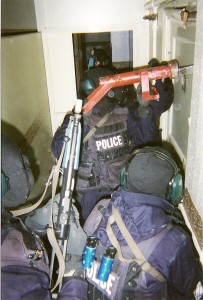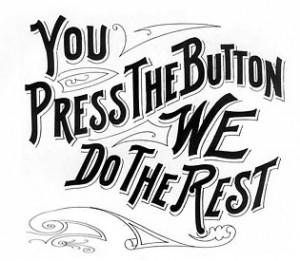I have known Russ Field since working with him on a few projects in a large Seattle (now Chicago) based aerospace company. Recently he posted a very (typically Russ) thorough reply on NWLEAN to a question about value stream accounting. I asked him to take the same basic material, clean it up a little, and let me publish it here as a guest post.
Added Feb 21: There are some good comments to this post as well.
Enabling Material-Only Costing in Value Streams
—————– By Russell Field ——————
For some time now, the value stream concept has been a topic of energetic debate. If you choose to implement that approach, you’ll find there is more than one reasonable way to organize them, each with its own requirements for management, measurement and performance assessment.
This discussion centers on the value stream design described in three excellent books:
Aside from my own experiences and observations, these works are the primary references for this article. I recommend them highly for anyone wanting to better understand the concepts and related impacts on the Finance function as a business “leans out”.
NOTE: This article is not an endorsement of this particular value stream form. Rather, it is examination of its enabling and prerequisite conditions.
The really short message, as in so many things, is “Don’t get the cart before the horse!” In this case, if material-only cost accounting procedures (discussed later) are implemented before the factory processes have been realigned and proven, the best which can be expected is a different flavor of misrepresentation.
First, though, some baseline thoughts.
“TRADITIONAL STANDARD COSTING” vs. COSTING OF (LABOR) STANDARDS
Remember, words have meaning. I’ve seen many discussions derailed because of confusion between these two phrases. The philosophy and practice of “Traditional Standard Costing” is not the same as the “costing of (labor) standards”.
The question is not whether I should know the cost of one widget, or the labor content (time) of that widget, or even the labor contribution ($$) to the cost of that widget; rather, the questions are how I should determine the hourly rate ($$) to apply to the labor content (time), and how I should account for other costs of producing that widget.
BUT – even those questions become academic in a value stream where all products have the same labor content and where all costs are contained within the value stream (more on that later); that’s when we can start talking about the average cost per unit at the value stream level.
“LEAN ACCOUNTING” vs. “ACCOUNTING FOR LEAN”
As described in AWCO (pg. 36), these are two different concepts.
“Lean Accounting” refers to the use of Lean tools and techniques to make the accounting process more efficient.
“Accounting for Lean” “… represents an accounting process that captures the benefits of a Lean implementation as well as motivates Lean behavior.”
MATURITY PATH OF “ACCOUNTING FOR LEAN”
Both PLA (Chapt. 2; pg. 141 et al) and WC (pg. 165 et al) make the point that changes in accounting techniques should be made in conjunction with or immediately following the successful implementation of Lean procedures on the shop floor (we won’t get into Service vs. Production in this article). To change the cost accounting processes BEFORE leaning out Operations merely confuses the situation and causes unnecessary churn.
That said, let’s proceed.
In my opinion, the ability to successfully implement and sustain the accounting techniques described in the books noted earlier is dependent upon getting the process “ducks” into four rows:
- Organization by value stream
- Elimination of task-level labor tracking
- Stabilization of overall value stream-level labor costs
- Lowering of inventory levels
Underlying each of these “duck rows” is, of course, a set of enabling conditions.
DUCK ROW #1) Organization by value stream
There’s plenty of material out there on value stream mapping, so for this discussion let’s just say there are some key characteristics:
- Similar process flows (or “routings”);
- Similar production cycle times (AKA “work content”);
- Similar physical size of product;
- Ideally, personnel dedicated to the value stream; and
- Again ideally, no “monuments” or shared resources (there are, of course, ways of dealing with shared resources and personnel, but I did say “ideally”).
In other words, this approach emphasizes segregation of product families with high similarity in multiple categories. What does all this buy us?
a) If every product follows the same process flow or path, physical segregation and rearrangement is much simpler. Additionally, there is a high likelihood that each product will use each resource (or resource type), further reducing the need for cost allocation between product lines/families.
b) If each product takes about the same amount of time at each task/resource, then the overall work content of all products is about the same.
c) If product size is similar, that helps keep the number of people needed and the need for additional, product-specific moving/handling equipment to a minimum (and supports similar work content).
d) & e) If people and equipment aren’t shared outside the value stream, then all of their costs can be attributed to the value stream.
NET RESULTS:
- The major sources of cost are captive within the value stream, so the need for allocation is minimized if not eliminated.
- Every product in the value stream population takes about the same flow time and has about the same total work content (which also minimizes allocation requirements).
- Some key sources of variation in that flow time and labor content are sorted out of the value stream by design.
DUCK ROW #2) Elimination of task-level labor tracking
There are two sub-elements here: “Stabilize task cycle times” and “Establish a common wage structure”. In order to reach these goals, we must create certain conditions.
a) Stabilize task cycle times
In order to create an environment in which a given task takes the same amount of time and effort regardless of who executes it, we need:
- Stable, high-quality processes (“reasonably under control and low variability”, PLA pg. 140/141 et al); this cuts down on how many times a job needs to be done, and how much input is wasted.
- Standard work; standardizing process steps helps assure that the job is done the same way each time.
- A cross-trained, multi-skilled workforce; in full implementation, this means that any member of the workforce can step in and execute any task.
b) Common wage structure
Note that a cross-training and multi-skilling not only helps stabilize task times, but also aids breaking down the “craftsman/guild” barriers to a common wage. For that, we need:
- A cross-trained, multi-skilled workforce
- Simplified processes; among other things, this makes cross-training and multi-skilling considerably easier.
NET RESULTS:
1) I no longer need to track how much time was spent executing an individual task; with high quality, standard work and cross-training, I know how long it takes because I know the plan.
2) I no longer need to track who executed the task in order to determine an appropriate rate (accountability/traceability is another issue), because everyone gets paid pretty much the same (within a job category, at least).
In short, I no longer need to run all over the production floor, tracking activity durations or costs at the task level. In fact, to the degree that the process paths and work content are very similar, I don’t even need to track them at the Item level.
DUCK ROW #3) Stabilization of overall value stream-level labor costs
Once I have eliminated the need for task-level labor tracking, then I need only to stabilize my labor population in order to keep my overall value stream labor costs at a fairly constant level.
The high-quality processes I put in place to stabilize my task cycle times will help by assuring that labor is used only for production (and not rework or re-make), but I also need to level my demand, either artificially within my walls or by working with the customer base toward that end (I may also need to level-sequence my product mix if I still have significant difference in work content between products).
In that way, I always have about the same amount of work to be done, and don’t need to bring people in, pull them back out, put them back in, or shake them all about (do the “Production Hokey Pokey”!).
NET RESULT:
I have a consistent amount of work to be done in the value stream, so I’m able to maintain a fairly fixed workforce population.
DUCK ROW #4) Lowering inventory levels
Once the inventory turn rate gets down to, or drops below the overall value stream cycle time, product is going out the door very soon after completion. Assuming a FIFO approach, I don’t need to put a lot of effort into tracking my inventory costs because a) they’re per current rates and b) there aren’t many pieces anyway.
NET RESULT:
I don’t have to keep separate track of what I have invested in each lot, batch or item. Even radical changes in material costs flush through the value stream very quickly.
SO:
IF I don’t have to mess with spreading/allocating costs;
AND IF every time I make a given product, it takes the same amount of time;
AND IF all the products I make in my value stream take the same amount of time;
AND IF anyone who makes it gets paid the same wage;
AND IF I don’t have to constantly change the size of my labor population,
THEN I can apply a flat hourly $$ rate – based on total value stream cost – to the product’s work standards (planned work content). In fact, at full maturity I may even be able to simply average my total periodic value stream costs over the number of pieces shipped – AKA “average cost per unit” (PLA pg. 124 et al).
If my value stream is fully segregated and mature, this is the closest I need to get to “overhead allocation”. I don’t have to account for variation in order quantity, labor expense or the like because I’ve designed/driven out those variations. I know what the labor content is because of the stable processes and high reliability; there’s no rework to account for because of the high quality; a worker is a worker is a worker from both a skill and pay standpoint, and I’m controlling the number of workers on the payroll (NOTE: Worker interchangeability must not be confused with worker dispensability / replaceability; it can take quite a while to adequately cross-train good personnel).
And the ONLY thing I really need to track is material consumption (you can throw in some consideration for features and characteristics costing if appropriate). Hence the term, “material-only cost system” (WC, pg. 38).
To recap, in order to enable truly simple, material-only costing we need to:
- Organize by value stream, driving out key categories of variation;
- Work to eliminate the need for task-level tracking of labor input and rates;
- Stabilize the overall value stream labor costs; and
- Lower inventory levels to less than one value stream cycle (or 5 days as some suggest).
To do all that, the fundamental enablers include:
- A value stream organized around product families with high similarity in routings, process time/work content, physical size and the ability to segregate personnel and resources
- Stable, reliable processes
- Standard work
- Cross-trained, multi-skilled workforce
- Simplified processes
- Stable, level demand
Of course, these enablers presuppose the existence of lower-level enablers (e.g. accurate BOMs and routings, and having appropriate metrics in place).
So what? My whole point is that there’s more to successfully implementing Lean Accounting techniques described in PLA, WC and AWCO than simply ceasing or starting to gather certain data or collect certain costs. If you already have these enablers in place, then you are better positioned to embrace the related accounting practices.
NOW – the BIG question is, “How do we manage our business until we can get these enablers firmly in place?”
I refer you again to the books noted above. All offer some good thoughts on this subject, but I will reiterate the sentiments expressed under the heading of “MATURITY PATH OF ‘ACCOUNTING FOR LEAN'”. Bottom line: “Don’t get the cart before the horse!”
Your current accounting processes are likely adequate for traditional manufacturing environments, especially those which are still largely mass-production oriented (PLA, pg. 4 et al). Both PLA and WC specifically discuss synchronizing the evolution of Lean Production Operations and “accounting for Lean” (and yeah, I capitalized it).

 Rather than a friendly cartoon character knocking on your door, a problem has kicked your door in and is standing in your living room. It must be dealt with, and dealt with quickly.
Rather than a friendly cartoon character knocking on your door, a problem has kicked your door in and is standing in your living room. It must be dealt with, and dealt with quickly.
